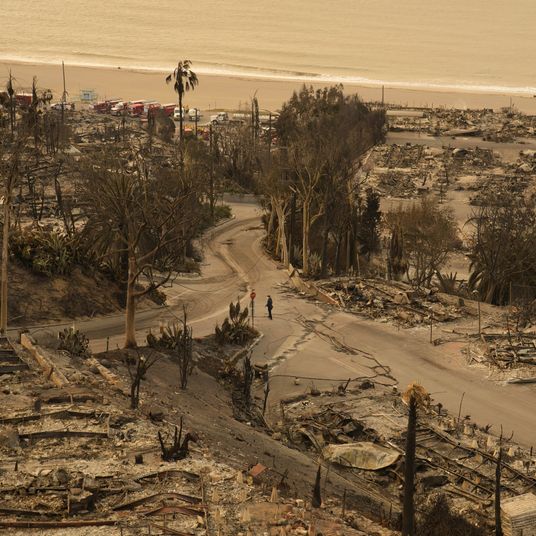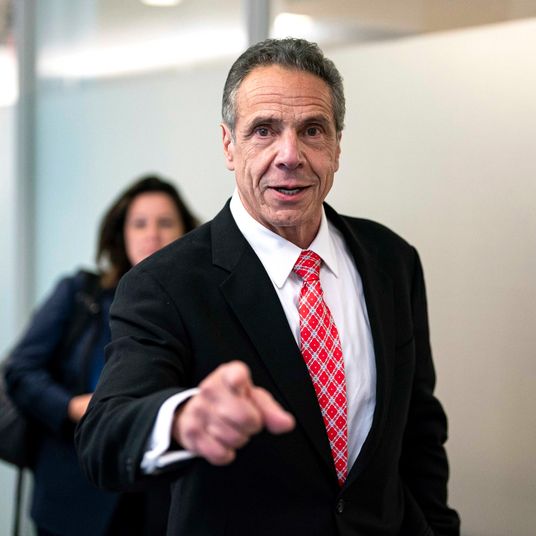
Poll madness.Data Courtesy of Pollster.com; Illustrations: Darrow
The opening of the Democratic National Convention on Monday will mark the beginning of the most intense period in general-election history, with two conventions, four debates, and a campaign that may stretch into as many as twenty states all compressed into a window of barely more than 70 days.
All of this is going to produce an enormous volume of polling — and even more commentary on what those polls mean. But polls are less accurate than they claim to be: While a typical reported margin of error might be three or four points, the actual average error in polls conducted in this year’s primaries was closer to seven points. Polls were never really intended to be predictive. They establish voter preferences at the time of survey, but don’t account for how those preferences might change. And there are vast and largely unresolved differences of opinion on methodology among pollsters.
In other words, polls require context to be understood, and their results are easy for media commentators to cherry-pick in order to advance a preferred story. Here are twelve key indicators to watch.
Some polls are better than others. The volume of polling typically accelerates rapidly after Labor Day — but more doesn’t necessarily mean better. And often it is the boutique firms, rather than the major brand names, that have tended to have the best results. You can trust polls from smaller firms like SurveyUSA, Rasmussen Reports, Mason-Dixon, Research 2000, and Quinnipiac. But be skeptical of what you see from Zogby — the firm that gave McCain a five-point lead yesterday — American Research Group, Fox News, and even the venerable Gallup.
Six points is the convention over-under. Where there is a convention, there is a convention bump. Each party gets the equivalent of about ten hours of free prime-time coverage between the three major networks (buying that ad time would run them a cool $180 million each). The key benchmark to keep in mind is six points; that has been the average size of a convention bump in the modern era. A convention that produces a bounce of more than six points can be considered a success and fewer than six points a failure.
But beware the convention hangover. This year, however, the convention bounces will be difficult to evaluate. The conventions come back-to-back, and John McCain will probably announce his vice-presidential nominee somewhere in between. Moreover, convention bounces can be fairly persistent, lasting as many as three or four weeks after the event. The first clean read we will get on the post-convention landscape will probably be immediately before the first presidential debate on September 26.
Watch the early voting in Ohio. About 20 percent of voters cast their ballots early in 2004, and that number is likely to increase as states continue to liberalize their voting rules. This year Ohio has created a seven-day window beginning on September 30 in which voters may register and vote at the same time. Pay special attention to breakouts of early voting numbers in the polls; these are the only voters that are 100 percent sure to turn in their ballots.
Don’t start panicking until October. The polls typically begin to increase exponentially in accuracy about one month before the election. As such, this is the first time that a candidate can fall too far behind to plausibly catch up.
Watch who’s watching the debates. The final presidential debate, on October 15, is probably the last opportunity to affect voter preferences at the wholesale level; after that, it all comes down to electoral math and ground game. But the debates may also provide some other important clues about the election. Historically, there is a rather strong relationship between the TV ratings for the presidential debates and turnout rates on Election Day, with each additional 10 million TV viewers translating to an increase in turnout of about 1.5 percent. If the audience for the debates is something like 50 million, expect fairly ordinary turnout. But if it’s more like 60, 70, or even 80 million viewers, turnout could be extremely high. That would favor Obama.
Only a five- to seven-point lead in national polls is safe. The one thing that’s certain about the day before the election is that the pundits won’t know as much as they claim to. That is because some elections can break very late. In 1980, for instance, Jimmy Carter and Ronald Reagan were virtually tied in polling just days before the election, but Reagan wound up winning by nearly ten points. In 2004, 9 percent of the electorate made its choice either on Election Day itself or on the three days immediately preceding it — movement that may come too late to be picked up by the polling.
Forget the Bradley Effect… Conventional wisdom holds that preelection polls tend to overstate the performance of black candidates — a phenomenon known as the Bradley Effect, named after 1982 Los Angeles mayoral candidate Tom Bradley, an African-American who narrowly lost his election after having a significant lead in the polls. More contemporary research, however, reveals that this effect disappeared at some point in the early nineties: Voters may still vote based on the race of the candidates, but their preferences will be reflected accurately by the polls. And in the Democratic primaries, it was Barack Obama rather than Hillary Clinton who overperformed his polls, beating his preelection averages by a margin of about three points.
…but beware the Verizon Effect. Nearly half of voters under the age of 30 rely primarily or exclusively on cell phones rather than landlines — and they will be off-limits to many pollsters, who do not include cell phones in their samples. Pollsters have various techniques to attempt to correct for this problem, but they may not be entirely satisfactory — research conducted by the Pew Research Center revealed that Barack Obama gained three points when a supplementary cell-phone sample was included.
Ignore the exit polls. Matt Drudge will leak them. You are allowed to look at them. You are not allowed to take them seriously. Exit polls were never really intended to be used as early indicators of victory — rather, they are meant for post-facto, macro-level demographic analysis. Raw exit polls will not have had the demographic weights applied to them that normal polls get, and their methodology — which involves a bunch of college kids running around with clipboards outside a polling place — is not nearly as rigorous. Unweighted exit polls significantly overestimated John Kerry’s numbers in 2004 and inflated Barack Obama’s margins by an average of about seven points during the primaries.
Watch Indiana early… The canary in the election-night coal mine may be Indiana, which is one of those traditionally red states that Barack Obama is trying to compete in, and where the polls close especially early. If the networks are able to call Indiana for John McCain within 45 minutes of poll close, then Barack Obama is in for a long night. If they’re able to call it for Barack Obama at any point after polls close, then John McCain is in for a long night.
…and Colorado, Ohio, Michigan, and Virginia late. I hate to agree with Karl Rove, but there are four key battlegrounds in this election. If Barack Obama wins any two of those four states, he is very likely to win the election.
Nate Silver is the founder of FiveThirtyEight.com, an independent polling and political-analysis Website.





























